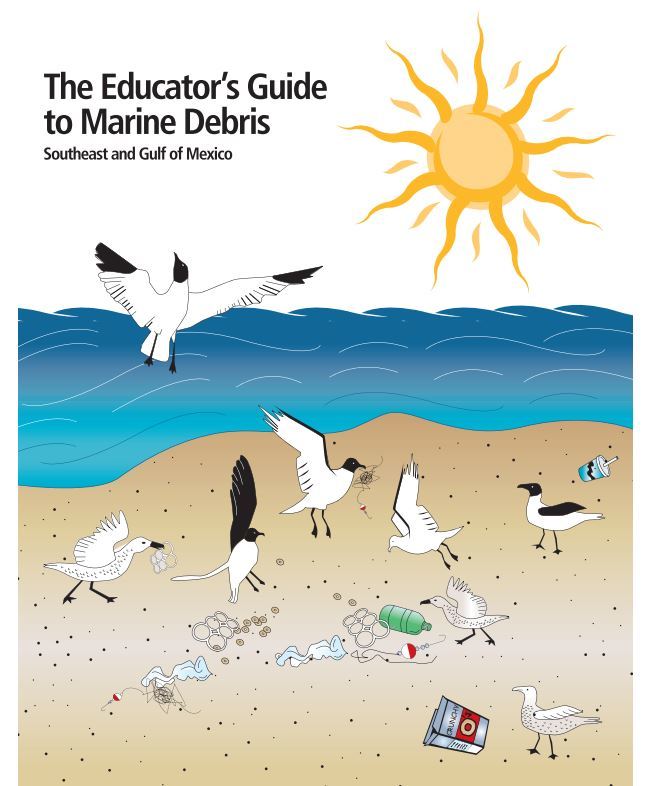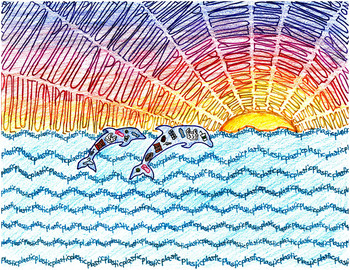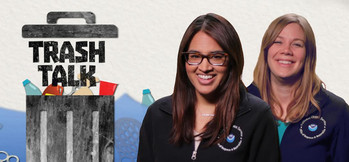 Access educational resources on the NOAA Marine Debris Program website.
One of the main types of marine debris that you hear about today is plastic marine debris. Plastic, once in water can drift, sink, float, or remain suspended in the water column depending on the density and buoyancy of the material. Animals can mistake plastics for food and this can result in a loss of nutrition, internal injury, intestinal blockage, starvation, and even death.
The Sink or Float activity, found in the the Educator's Guide to Marine Debris in the Southeast and Gulf of Mexico curriculum (page 9), can be adapted for home use by locating plastics found around the house such as empty and clean yogurt containers, plastic baggies, and old gift cards.
The activity provides a data table and observation questions. It is suitable for grades 5-8. Download the lesson plan here.
 Artwork by Kate D. (Grade 8, Florida), winner of the Annual NOAA Marine Debris Program Art Contest.
This year, we celebrated Earth Day by announcing the winners of the Annual NOAA Marine Debris Program Art Contest! We received hundreds of colorful, fun, and informative entries from around the country, and although we wish we could showcase them all, we are excited to share the winners of this year’s contest with you.
Thank you to all the students and schools that participated in this year’s contest. We appreciate your art and care for our ocean and Great Lakes. Congratulations to all of our winners!
You can view all of the art contest winners here.
 Explore marine debris topics, such as the garbage patch, right from home!
The NOAA Marine Debris Program has free activities, videos, and more available online. On the website, there is a dedicated section with resources and activities for all ages, where you can view activity books and browse lesson plans. Get started and download an activity today.
Learn more.
 “Atlantic Octopus” by Alicia Z., Grade 7, is a winner of the Marine Art Contest 2019.
With lots of kids home from school, you might be looking for educational activities* that can be done without leaving the house. Here’s a quick roundup of NOAA’s most popular educational resources to help you safely hunker down while learning about the ocean and atmosphere.
Learn More
*Note: These activities can be completed at home, but please be sure to follow the latest social-distancing and other health safety guidelines from the Centers for Disease Control and Prevention and your local health authorities.
Turn a egg carton into a beautiful bouquet of flowers!
Supplies needed:
-One (or more) egg carton (plastic or paper will work)
-Paint
-Paint brushes
-Scissors
-Glue
Directions:
1. Take the top off of the egg carton and set aside.
2. Cut the carton into three sections, as seen in the picture above (step 2). Take the egg carton top and cut long strips to make the flower stems. Don't forget to save room to cut out the leaves.
3. Paint the flower petals, stems, and leaves any color and set aside to dry.
4. Once everything is dry, assemble the flowers by gluing it together (see image above, step 4).
Tip: It might help to glue the assembled flowers onto a piece of painted cardboard for stability.
Let us know what you think!
Please provide feedback on our marine debris resources so that we can better serve your needs.
Email: marinedebris.education@noaa.gov
|